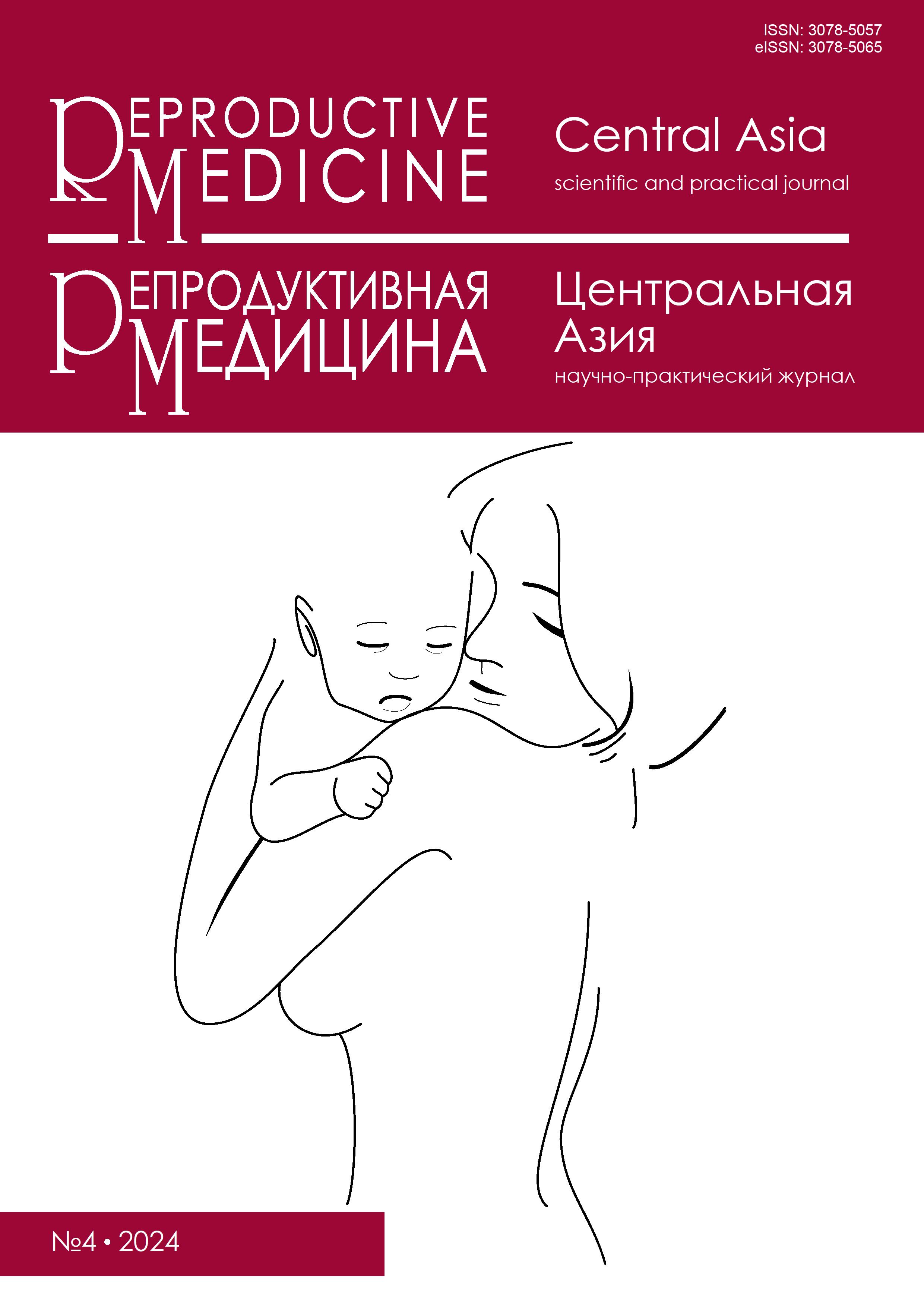Individual approach in surgical treatment of genital prolapse in women: comparative analysis of methods and treatment results
DOI:
https://doi.org/10.37800/RM.4.2024.432Keywords:
genital prolapse, vaginal hysterectomy, laparoscopic surgery, quality of life, individualized approach, relapses, complicationsAbstract
Abstract
Relevance.
Pelvic organ prolapse is a common condition among peri- and postmenopausal women, significantly impairing their quality of life. Modern surgical methods, such as vaginal hysterectomy and laparoscopically assisted vaginal hysterectomy, have proven their effectiveness. However, the recurrence and complication rates associated with standard approaches highlight the need for individualized treatments considering anatomical, age-related, and social factors.
Objective.
To explore the benefits of an individualized approach to the surgical treatment of pelvic organ prolapse in peri- and postmenopausal women and to conduct a comparative analysis of two surgical correction methods.
Methods.
The study included 195 patients with stage III-IV pelvic organ prolapse. A comparative analysis of vaginal hysterectomy and laparoscopically assisted vaginal hysterectomy with pelvic floor repair was performed. Key parameters assessed included operation duration, blood loss levels, complication rates, patient quality of life at 1, 3, and 6 months post-treatment, and recurrence rates. Statistical analysis was conducted using descriptive and comparative statistical methods.
Results.
Laparoscopically assisted vaginal hysterectomy demonstrated higher effectiveness compared to vaginal hysterectomy, including lower recurrence rates (5% versus 10%) and improved quality of life at 6 months post-treatment (self-assessment score of 4.0 versus 3.5). However, the LAVH method was associated with longer operation times and higher blood loss levels. Complications were observed in 5% of cases after LAVH and were absent in the VH group.
Conclusion.
An individualized approach to the treatment of pelvic organ prolapse enhances the effectiveness of surgical interventions, reduces recurrence rates, and improves patient quality of life. Laparoscopically assisted methods are recommended for patients at higher risk of complications or recurrence, despite their greater complexity.
Keywords: genital prolapse, vaginal hysterectomy, laparoscopic surgery, quality of life, individualized approach, relapses, complications.
References
Maher CF, Baessler KK, Barber MD, Cheong C, Consten ECJ, Cooper KG, Deffieux X, Dietz V, Gutman RE, van Iersel JJ, Nager CW, Sung VW, de Tayrac R. Surgical management of pelvic organ prolapse. Climacteric. 2019 Jun;22(3):229-235. doi: 10.1080/13697137.2018.1551348. Epub 2018 Dec 21. PMID: 30572743.
van der Vaart LR, Vollebregt A, Milani AL, Lagro-Janssen AL, Duijnhoven RG, Roovers JP, Van der Vaart CH. Pessary or surgery for a symptomatic pelvic organ prolapse: the PEOPLE study, a multicentre prospective cohort study. BJOG. 2022 Apr;129(5):820-829. doi: 10.1111/1471-0528.16950. Epub 2021 Oct 28. PMID: 34559932; PMCID: PMC9298049.
Ubertazzi EP, Soderini HFE, Saavedra Sanchez AJM, Fonseca Guzman C, Paván LI. Long-term outcomes of transvaginal mesh (TVM) In patients with pelvic organ prolapse: A 5-year follow-up. Eur J Obstet Gynecol Reprod Biol. 2018 Jun;225:90-94. doi: 10.1016/j.ejogrb.2018.03.060. Epub 2018 Apr 14. PMID: 29680466.
Kayembe AT, Kayembe CDKK, Bebele JK, Tozin RR. Factors associated with genital prolapse to Saint Joseph Hospital of Kinshasa. Pan Afr Med J. 2021 Dec 16;40:234. doi: 10.11604/pamj.2021.40.234.30529. PMID: 35178145; PMCID: PMC8817189. Barber MD, Maher C. Pelvic organ prolapse. Lancet. 2023;401(10387):490-502. doi:10.1016/S0140-6736(22)02289-6
Illiano E, Ditonno P, Giannitsas K, De Rienzo G, Bini V, Costantini E. Robot-assisted Vs Laparoscopic Sacrocolpopexy for High-stage Pelvic Organ Prolapse: A Prospective, Randomized, Single-center Study. Urology. 2019 Dec;134:116-123. doi: 10.1016/j.urology.2019.07.043. Epub 2019 Sep 26. PMID: 31563536.
Lee, S.H., Oh, S.R., Cho, Y.J. et al. Comparison of vaginal hysterectomy and laparoscopic hysterectomy: a systematic review and meta-analysis. BMC Women's Health 19, 83 (2019). https://doi.org/10.1186/s12905-019-0784-4
Болдырева Ю. А., Цхай В. Б., Полстяной А. М., Полстяная О. Ю., Табакаева М. С. Современные методы хирургического лечения пролапса тазовых органов // Астраханский медицинский журнал. 2023. Т. 18, № 3. С. 8–21. doi: 10.29039/1992-6499-2023-3-8-21.
Самойлов Е.А., Фокина М.Ю., Виривская Е.В., Бахтияров К.Р. Лапароскопические методы лечения пациенток с пролапсом тазовых органов. Российский вестник акушера-гинеколога. 2024;24(3):55 59.
Dietz HP. Ultrasound in the investigation of pelvic floor disorders. Curr Opin Obstet Gynecol. 2020 Dec;32(6):431-440. doi: 10.1097/GCO.0000000000000659. PMID: 32833745.
Dobrokhotova YuE, Taranov VV, Lapina IA, Tyan AG, Chirvon TG, Glebov NV, Kaykova OV, Malakhova AA. Laparoscopic correction of pelvic organ prolapse and stress urinary incontinence: a current view of the problem. Gynecology. 2023;25(1):91–94. DOI: 10.26442/20795696.2023.1.202069
Downloads
Published
How to Cite
Issue
Section
License
Copyright (c) 2024 The rights to a manuscript accepted for publication are transferred to the Journal Publisher. When reprinting all or part of the material, the author must refer to the primary publication in this journal.

This work is licensed under a Creative Commons Attribution-NonCommercial-NoDerivatives 4.0 International License.
The articles published in this Journal are licensed under the CC BY-NC-ND 4.0 (Creative Commons Attribution – Non-Commercial – No Derivatives 4.0 International) license, which provides for their non-commercial use only. Under this license, users have the right to copy and distribute the material in copyright but are not permitted to modify or use it for commercial purposes. Full details on the licensing are available at https://creativecommons.org/licenses/by-nc-nd/4.0/.





